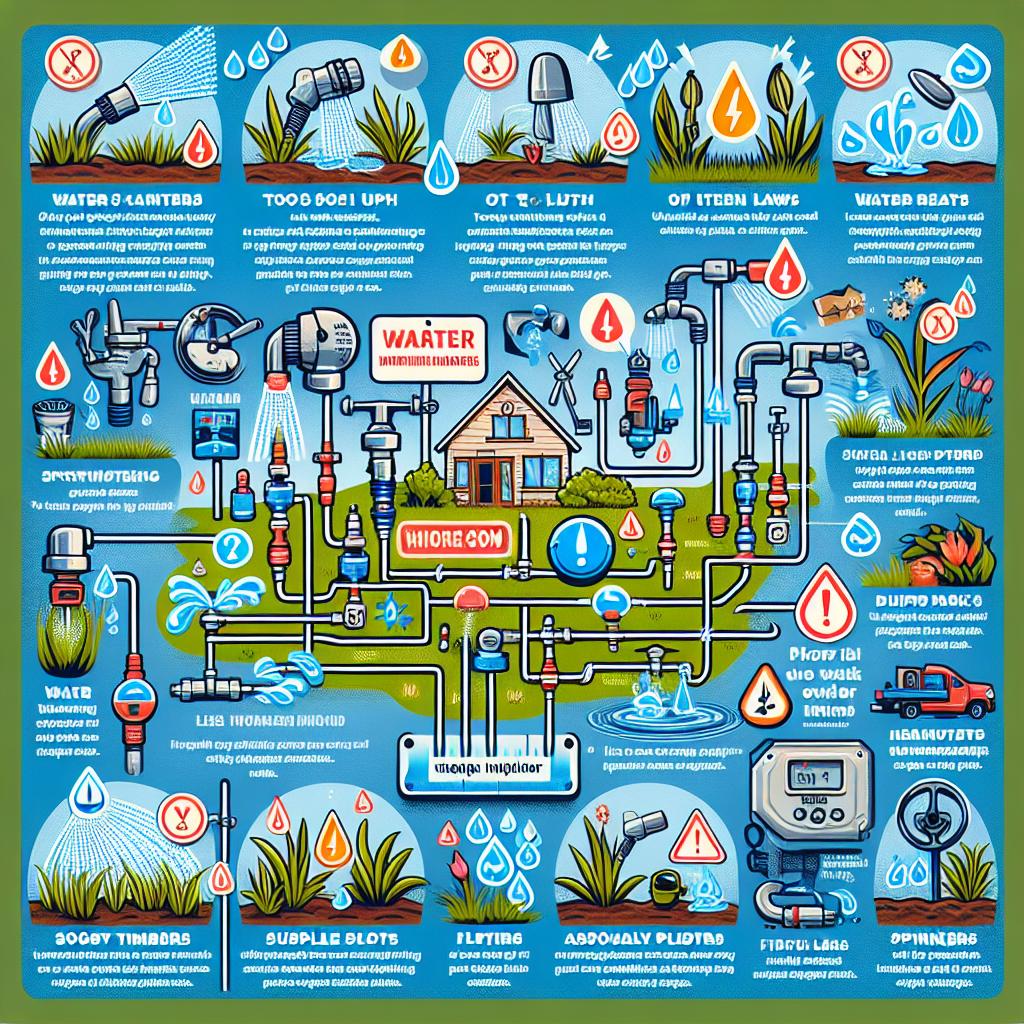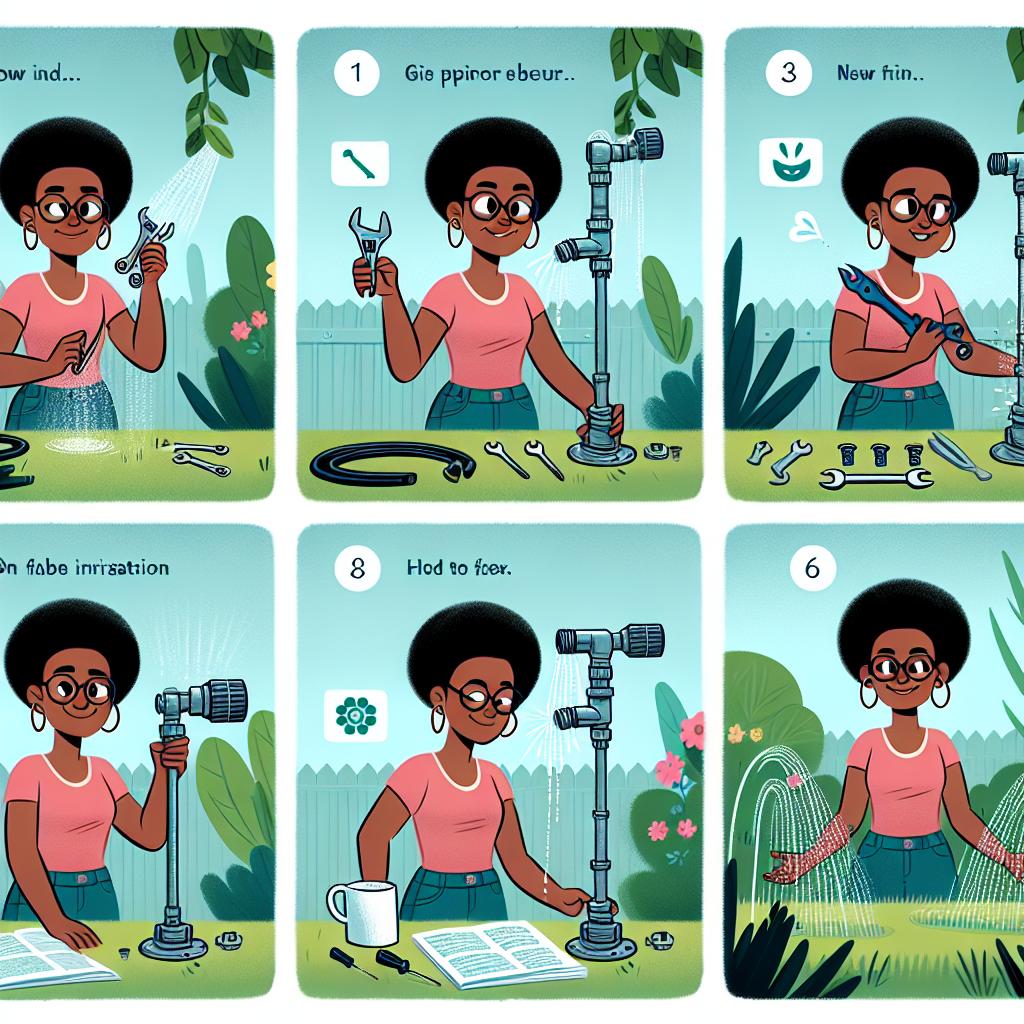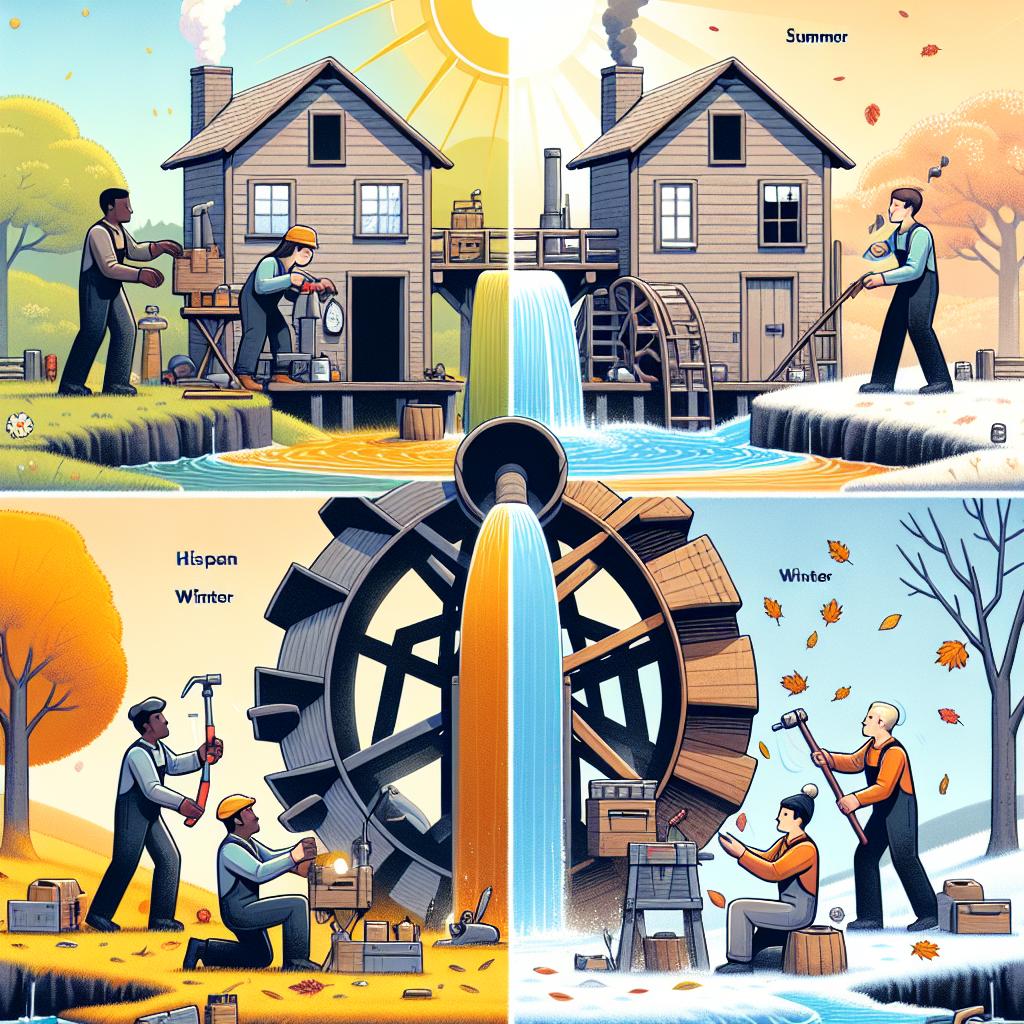This post may contain affiliate links which means I may receive a commission for purchases made through links. Learn more on my Private Policy page.
Introduction:
Imagine stepping into your garden, the sun shining brightly, and everything is blooming beautifully – a paradise of colors and fragrances! But then, you notice a patch of wilted plants and a few drooping flowers, and your heart sinks. What went wrong? More often than not, the culprit is hiding right under your sprinkler heads: your irrigation system. Whether it’s a pesky leak, uneven watering, or a mysterious malfunction, irrigation issues can sneak up on even the most vigilant gardeners. But don’t worry! With a little know-how and the right troubleshooting tips, you can tackle these common problems like a pro. In this friendly guide, we’ll walk you through the ins and outs of diagnosing and fixing your irrigation system so you can get back to enjoying your thriving garden oasis. Let’s roll up our sleeves and dig into the world of watering wisdom!
Identifying Symptoms: Recognizing Your Irrigation Systems Red Flags
When it comes to maintaining a healthy irrigation system, staying vigilant for warning signs is key to avoiding larger issues down the line. Leaking pipes, brown spots on your lawn, and reduced water flow are just a few indicators that something might be amiss. Here are some specific symptoms to watch for:
- Brown patches: Indicates uneven water distribution or blockages.
- Pooling water: May suggest drainage problems or poor sprinkler alignment.
- Dry zones: A clear sign your system isn’t covering every area effectively.
- Unusual noises: Such as hissing or gurgling, often point to pressure issues.
Being aware of these symptoms will allow you to act swiftly before further damage occurs. Additionally, keeping a close eye on your water bill can act as a red flag. If you notice an unexplained increase, it could mean leaks or inefficiencies in your system. Consult this handy reference table for quick symptoms and what they typically indicate:
| Symptom | Possible Cause |
|---|---|
| Leaking pipes | Punctured or worn-out materials |
| Dry patches | Clogged emitters or blocked pipes |
| High water bill | Leaks or overwatering |
| Sprinkler not rotating | Bent or damaged sprinkler head |

Essential Tools for the DIY Gardener: What You Need for Effective Troubleshooting
As a DIY gardener, having the right tools on hand is crucial for effective troubleshooting in your irrigation system. Basic hand tools such as a shovel, trowel, and garden fork will help in accessing your irrigation lines easily. Moreover, investing in a voltage meter can help you quickly diagnose electrical issues, while a pressure gauge allows you to monitor the water pressure in your system. Don’t forget a sturdy pair of pruning shears; they can be invaluable for managing any overgrown plants that may obstruct your irrigation setup. Over time, familiarizing yourself with these tools can make fixing common issues a seamless process.
Additionally, having a repair kit stocked with various fittings, connectors, and patches can save you time during emergencies. Consider organizing your tools in a toolbox or gardening caddy for easier access. Here’s a quick breakdown of essential tools for troubleshooting:
| Tool | Purpose |
|---|---|
| Shovel | Excavating soil around pipes |
| Voltage Meter | Diagnosing electrical components |
| Pressure Gauge | Monitoring water pressure |
| Repair Kit | Fixing leaks and connections |
| Pruning Shears | Removing obstructions |

Step-by-Step Solutions: Fixing Common Irrigation Woes with Ease
When faced with irrigation issues, the first step is to identify the specific problem. Common culprits include clogged filters, faulty timers, or leaks in the system. Here’s how to tackle each of these challenges effectively:
- Check for Clogs: Inspect your sprinkler heads and hoses for any blockages. Clean or replace filters if necessary.
- Test the Timer: Ensure that your irrigation timer is set correctly for your local climate conditions and that it functions properly.
- Inspect for Leaks: Look for any signs of water pooling or damp areas. Repair or replace any damaged pipes or fittings.
Once the problem area is identified and repaired, it’s essential to monitor your system to ensure it functions efficiently. For optimal performance, consider reviewing your irrigation schedule. Below is a simple table to help you determine the best watering frequency based on plant types:
| Plant Type | Watering Frequency |
|---|---|
| Lawns | 1-2 times a week |
| Flower Beds | 2-3 times a week |
| Vegetable Gardens | 3-4 times a week |
By maintaining attention to these details, you can significantly improve the efficiency of your irrigation system and ensure your plants thrive.

Preventative Maintenance: Keeping Your System Healthy for Seasons to Come
Taking proactive steps to ensure your irrigation system runs smoothly year-round can save you from headaches during those critical growing seasons. Regular inspections and maintenance not only prolong the life of your system but also ensure efficient water usage. Here are some simple tactics to adopt:
- Inspect Sprinkler Heads: Look for clogs, misalignment, or damage that can disrupt coverage.
- Check Valves: Ensure they are functioning correctly to prevent leaks and water waste.
- Examine Controllers: Update your system settings according to seasonal changes and weather forecasts.
- Flush Lines: Clearing out sediment build-up will promote better flow and help avoid blockages.
For those who prefer a more structured approach, consider creating a seasonal maintenance schedule. This table outlines key tasks and their recommended frequency:
| Task | Frequency |
|---|---|
| Inspect Sprinkler Heads | Monthly |
| Clean Filters and Valves | Every 3 Months |
| System-wide Check-up | Seasonal |
| Replace Damaged Components | As Needed |
Future Outlook
As we wrap up our journey through the world of irrigation troubleshooting, remember that every system, like every garden, has its unique quirks and charm. Armed with the insights and tips we’ve discussed, you’re now ready to tackle any hiccup that comes your way with confidence and ease.
Think of your irrigation system as a partner in your gardening adventure. Occasionally, it may need a little nudge or a gentle reconfiguration to help it thrive, just like the plants it nourishes. So, don your problem-solving hat, roll up those sleeves, and embrace the process—each challenge is just an opportunity in disguise, waiting for your creative touch!
And as you fix those leaks, adjust those timers, and clear those clogged nozzles, don’t forget to take a moment to appreciate the lush paradise you’re cultivating. After all, a well-functioning irrigation system is the quiet hero behind every vibrant bloom and flourishing vegetable patch.
Now, go forth and make your garden dreams blossom, knowing that you have the tools to keep everything flowing smoothly. Happy gardening! 🌼💧
This post may contain affiliate links which means I may receive a commission for purchases made through links. Learn more on my Private Policy page.

